Onion growing secrets unlocked! Imagine pulling plump, juicy onions straight from your own backyard, ready to add a burst of flavor to your favorite dishes. Forget those bland, store-bought onions – we’re diving deep into the world of homegrown goodness, and I’m so excited to share my favorite tips and tricks with you!
For centuries, onions have been a staple in cuisines around the globe, revered not only for their culinary uses but also for their medicinal properties. From ancient Egypt, where they were symbols of eternity, to medieval Europe, where they were believed to ward off disease, onions have a rich and fascinating history. But let’s be honest, sometimes growing them can feel like a mystery, right?
That’s where this DIY guide comes in. I’ve compiled a collection of simple yet effective techniques that will transform your onion-growing game. Whether you’re a seasoned gardener or just starting out, these onion growing secrets will help you achieve a bountiful harvest. We’ll cover everything from choosing the right varieties for your climate to mastering the art of watering and fertilizing.
Why do you need these hacks? Because growing your own onions is not only incredibly rewarding, but it also allows you to control the quality and freshness of your food. Plus, there’s nothing quite like the satisfaction of knowing you grew something delicious from seed to table. So, grab your gardening gloves, and let’s get started on this exciting journey together!
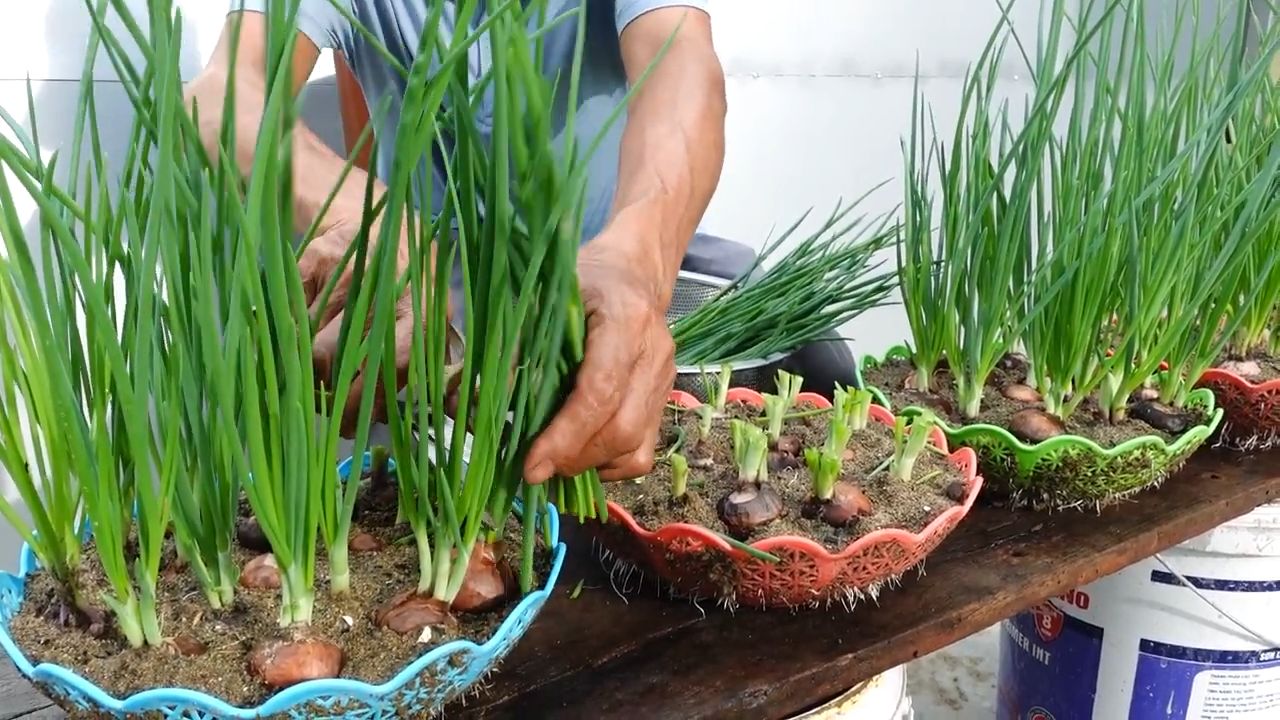
Onion-Growing Secrets: How to Harvest Huge, Healthy Onions!
Hello dear garden friends! I am so excited to share my best tips and tricks for growing onions with you today. I have experimented and learned for years, and now I can promise you: with these secrets, you will bring in a fantastic onion harvest! No more small, measly little onions, but plump, healthy, and delicious ones. Let’s get started!
The Basics: Location, Soil, and Variety Selection
Before we dive into the details, we need to establish the foundation. The right location, the appropriate soil, and choosing the right onion variety are crucial for success.
- Location: Onions love the sun! Choose a location that gets at least 6-8 hours of direct sunlight per day. The more sun, the better!
- Soil: The soil should be loose, well-draining, and rich in organic matter. Onions do not like waterlogged conditions, as their roots can rot.
- Variety Selection: There are countless onion varieties, and the choice depends on your taste and your climate. Some popular varieties are:
- Yellow Onions: Versatile, store well, ideal for cooking.
- Red Onions: Milder taste, great for salads and grilling.
- White Onions: Sharp taste, good for Mexican dishes.
- Sweet Onions (Gemüsezwiebeln): Huge, sweetish, perfect for onion rings.
Sowing Seeds or Planting Sets?
You have two options for growing onions: by sowing seeds or by planting onion sets. Both methods have their pros and cons.
- Sowing Seeds:
- Advantages: Cheaper, greater variety of types, fewer diseases.
- Disadvantages: Longer growing time, more effort to start them indoors.
- Onion Sets:
- Advantages: Faster harvest, easier to plant.
- Disadvantages: More expensive, less variety, more susceptible to diseases.
I personally prefer onion sets because they are simply faster and more straightforward. But if you have the time and patience, you can certainly sow onion seeds.
Step-by-Step Guide: Planting Onions (Onion Sets)
Alright, now let’s get down to business! Here is my detailed guide for planting onion sets:
- Soil Preparation: Loosen the soil thoroughly and remove weeds. Mix in compost or well-rotted manure to enrich the soil with nutrients. I also like to add some horn shavings, which is a great slow-release fertilizer.
- Planting Time: The best time to plant onion sets is in the spring, as soon as the ground is free of frost. In mild regions, you can also plant in the fall.
- Spacing: Plant the onion sets about 10-15 cm apart in the row and 20-30 cm between rows. This gives the onions enough space to grow.
- Planting Depth: Press the onion sets into the soil so that only the tip is showing. Make sure the roots are pointing downwards.
- Watering: Water the onions thoroughly after planting. This helps them to root quickly.
Step-by-Step Guide: Sowing Onions (Starting Indoors)
If you have decided to sow seeds, you will need to start the onions indoors. Here’s how:
- Prepare Seed Trays: Fill seed trays or small pots with seed-starting mix.
- Sowing: Sow the onion seeds about 1 cm deep in the soil.
- Watering: Water the soil gently, preferably with a spray bottle.
- Location: Place the seed trays in a bright and warm location. The ideal germination temperature is around 18-20°C.
- Moisture: Keep the soil moist, but not wet.
- Pricking Out: Once the seedlings are large enough (about 5-7 cm high), you can prick them out, i.e., transplant them into larger pots.
- Planting Out: After the last frosts, you can transplant the onion plants into the open ground. Be sure to use the same spacing as for onion sets.
Care: Watering, Fertilizing, and Weed Control
After planting or transplanting, proper care is crucial for a bountiful harvest.
- Watering: Onions need regular water, especially during their growth phase. Make sure the soil is always slightly moist, but avoid waterlogging.
- Fertilizing: Fertilize the onions regularly with an organic fertilizer. I like to use compost tea or diluted nettle tea. This strengthens the plants and promotes growth.
- Weed Control: Keep the bed free of weeds. Weeds compete with the onions for nutrients and water. You can either weed by hand or apply a layer of mulch.
- Loosen the Soil: Loosen the soil regularly to improve aeration.
Protection from Pests and Diseases
Onions can be affected by various pests and diseases. Here are some tips on how to protect your onions:
- Onion Fly: The onion fly lays its eggs on the onions, and the larvae eat their way into the bulbs. You can protect your onions with a crop cover.
- Downy Mildew: Downy mildew is a fungal disease that appears as a gray coating on the leaves. Ensure good air circulation and avoid waterlogged soil. If necessary, you can use a fungicide.
- Onion Rust: Onion rust is another fungal disease that manifests as orange pustules on the leaves. Remove affected leaves and ensure good ventilation.
The Right Time to Harvest
The timing of the harvest depends on the variety and when you planted. As a rule, onions are ready for harvest when the foliage turns yellow and falls over.
- Harvest: Carefully pull the onions out of the ground.
- Drying: Let the onions dry for a few days in a dry and airy place.
- Storing: Store the dried onions in a cool, dry, and dark place. They will keep for several months this way.
Additional Tips and Tricks for a Super Harvest
Here are a few more tips that will help you maximize your onion harvest:
Onion Flowers: If your onions start to flower, you should remove the blossoms.Das len
Crop Rotation: Do not plant onions in the same spot every year. Rotate your crops to prevent diseases and pests.
Companion Plants: Good companion plants for onions are carrots, chamomile, and marigolds. They deter pests and promote growth.
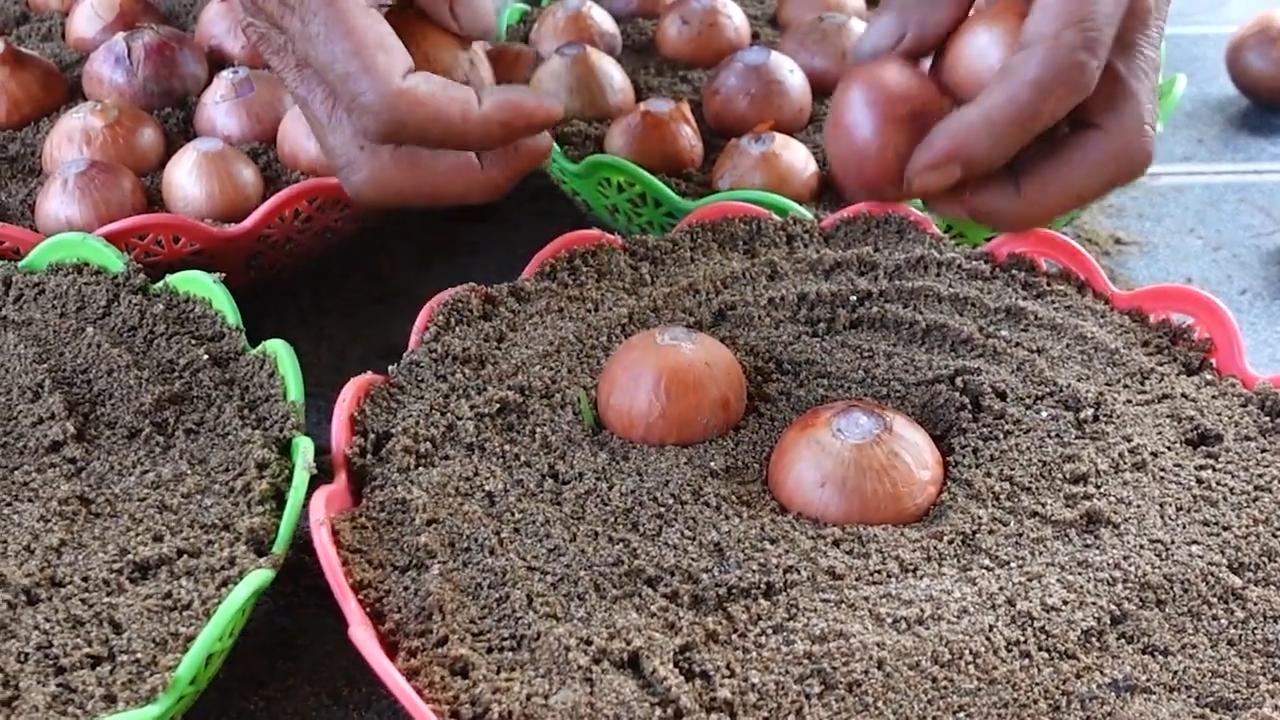
Conclusion
So, there you have it! Unlocking these onion growing secrets isn’t just about saving a few dollars at the grocery store; it’s about connecting with the earth, understanding the life cycle of a plant, and experiencing the unparalleled satisfaction of harvesting something you nurtured from a tiny seed or set. These methods, passed down through generations and refined by modern understanding, offer a pathway to consistently producing plump, flavorful onions that will elevate your culinary creations.
Why is this a must-try? Because store-bought onions, while convenient, often lack the vibrant flavor and freshness of homegrown varieties. Plus, you have complete control over the growing process, ensuring your onions are free from unwanted pesticides and herbicides. Imagine the pride you’ll feel serving a dish featuring onions you cultivated yourself!
But the journey doesn’t end here. Feel free to experiment with different onion varieties to discover your favorites. Try red onions for their sharp bite in salads, yellow onions for their versatility in cooking, or sweet onions for caramelizing into delectable toppings. Consider companion planting – carrots and onions are a classic pairing that benefits both crops. You can also explore different soil amendments to optimize your onion’s growth. Some gardeners swear by adding bone meal for phosphorus, while others prefer compost tea for a boost of nutrients.
Don’t be afraid to tweak these onion growing secrets to suit your specific climate and soil conditions. Gardening is all about learning and adapting. Keep a journal to track your progress, noting what works well and what doesn’t. This will help you refine your techniques and become an even more successful onion grower over time.
We wholeheartedly encourage you to give these techniques a try. Whether you’re a seasoned gardener or a complete beginner, you’ll find that growing onions is a rewarding and surprisingly easy endeavor. The taste of a freshly harvested onion, bursting with flavor, is an experience you won’t soon forget.
And most importantly, we want to hear about your experiences! Share your successes, your challenges, and your own unique tips and tricks in the comments below. Let’s build a community of onion enthusiasts, sharing our knowledge and inspiring each other to grow the best onions possible. Your insights could be invaluable to someone just starting out, and we can all learn from each other’s experiences. So, get your hands dirty, embrace the process, and prepare to enjoy the fruits (or rather, the bulbs!) of your labor. Happy growing!
Frequently Asked Questions (FAQ)
Q: What is the best time of year to plant onions?
A: The best time to plant onions depends on your climate and whether you’re starting from seed, sets, or transplants. In general, for northern climates with cold winters, start seeds indoors 8-10 weeks before the last expected frost. Sets and transplants can be planted outdoors 2-4 weeks before the last frost. In southern climates with mild winters, you can plant sets and transplants in the fall for a spring harvest. The key is to ensure the soil is workable and the plants have enough time to mature before extreme temperatures arrive. Check your local extension office for specific recommendations for your region.
Q: What kind of soil do onions need?
A: Onions thrive in well-drained, fertile soil that is rich in organic matter. They prefer a slightly acidic to neutral pH, ideally between 6.0 and 7.0. Before planting, amend your soil with compost, well-rotted manure, or other organic materials to improve drainage and fertility. Avoid heavy clay soils, as they can become waterlogged and hinder bulb development. If you have clay soil, consider planting in raised beds or containers. Adding sand can also help improve drainage.
Q: How much sun do onions need?
A: Onions are sun-loving plants and require at least 6-8 hours of direct sunlight per day to produce large, healthy bulbs. Choose a planting location that receives full sun throughout the growing season. If you live in a particularly hot climate, some afternoon shade may be beneficial to prevent the plants from scorching.
Q: How often should I water my onions?
A: Onions need consistent moisture, especially during bulb formation. Water deeply and regularly, aiming to keep the soil consistently moist but not waterlogged. The frequency of watering will depend on your climate, soil type, and rainfall. Check the soil moisture regularly and water when the top inch feels dry to the touch. Avoid overhead watering, as this can promote fungal diseases. Drip irrigation or soaker hoses are ideal for delivering water directly to the roots.
Q: What are onion sets, and how do I plant them?
A: Onion sets are small, immature onion bulbs that have been partially grown and then dried. They are a popular and easy way to start onions, especially for beginners. To plant onion sets, simply push them into the soil, pointy side up, about 1-2 inches deep and 4-6 inches apart. Ensure the top of the set is just barely covered with soil. Water well after planting.
Q: How do I fertilize my onions?
A: Onions are heavy feeders and benefit from regular fertilization. Apply a balanced fertilizer (e.g., 10-10-10) at planting time, following the package instructions. Side-dress with nitrogen fertilizer every 2-3 weeks during the growing season to promote leafy growth and bulb development. Avoid over-fertilizing, as this can lead to excessive top growth at the expense of bulb size. Organic options include fish emulsion, compost tea, and blood meal.
Q: How do I know when my onions are ready to harvest?
A: Onions are typically ready to harvest when the tops begin to fall over and turn yellow or brown. This indicates that the bulb has reached its full size and is starting to mature. You can also gently dig around the base of the plant to check the size of the bulb. Once the tops have fallen over, stop watering and allow the bulbs to dry out in the ground for a few days.
Q: How do I cure and store my onions?
A: Curing is essential for extending the storage life of your onions. After harvesting, gently brush off any excess soil and lay the onions out in a single layer in a well-ventilated, dry place, such as a garage or shed. Allow them to cure for 2-3 weeks, or until the necks are completely dry and the outer skins are papery. Once cured, trim the roots and cut the tops back to about 1-2 inches. Store the onions in a cool, dry, and dark place, such as a pantry or basement. Avoid storing them in plastic bags, as this can trap moisture and promote spoilage. Braiding the tops together and hanging them is another effective storage method.
Q: What are some common onion pests and diseases?
A: Common onion pests include onion maggots, thrips, and onion aphids. Diseases include downy mildew, botrytis blight, and white rot. Practice good garden hygiene to prevent pest and disease problems. Rotate your crops regularly, remove any infected plants promptly, and use organic pest control methods, such as insecticidal soap or neem oil. Ensure good air circulation around your plants to reduce the risk of fungal diseases.
Q: Can I grow onions in containers?
A: Yes, onions can be successfully grown in containers, especially if you have limited garden space. Choose a large container (at least 12 inches in diameter) with good drainage holes. Use a well-draining potting mix and follow the same planting and care instructions as for growing onions in the ground. Container-grown onions may require more frequent watering and fertilization, as the soil tends to dry out more quickly.

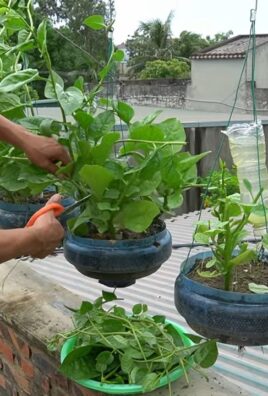
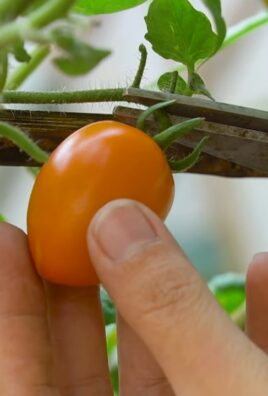
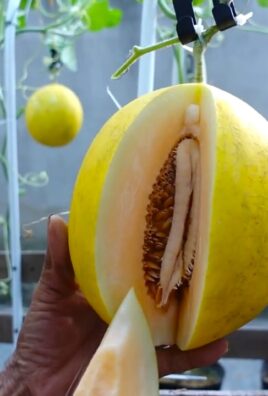
Leave a Comment